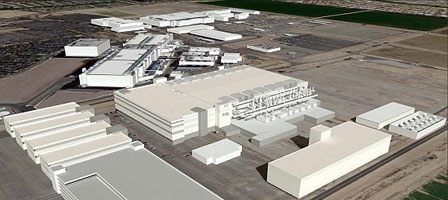A surfeit of leading-edge production plants
The huge growth in global capacity to supply goods and services because of the heavy investment in modern factories, especially in the emerging economies, has not been matched by enough scrapping of obsolescent capacity in the developed economies.
In fact in the latter, governments have gone to considerable lengths to retard such scrapping — to save jobs and the vested interests of capital and the political classes.
The most obvious example is the motor industry, where growth in the East and contraction-prevention in the West means the world sits with the capacity to build 30 million vehicles a year more than are needed.
The outcome of the above supply factors has been the emergence of major excess productive capacity in the global economy as a whole.
Shilling says that in the US, despite the recent economic recovery, utilization of industrial capacity is still “at very low levels” and there’s huge unemployment. It will be years before all the excess business and labour capacity will be absorbed. He wonders how China’s huge new investment in steel, cement and power plants can be fully utilized.
The other leg of the imbalance in the global economy is insufficient demand, which isn’t growing fast enough to soak up the expansion in supply of goods and services.
The collapse of the credit bubble has left the world with a huge weight of dodgy debt:
• Banks are focused on strengthening their balance sheets rather than financing economic expansion;
• Consumers, frightened about the future, are tending to cut back on their spending and boost their saving where they can – except where need is dire, they don’t want to borrow more;
• Companies are wary about investing in expanding their capacity, preferring to concentrate on cost-cutting, debt reduction and accumulation of the safety cushion of lots of cash.
• Even governments, although they would like to spend even more to stimulate economic growth, are being forced by the high level of their own debt, the nervousness of investors about the safety of sovereign bonds, and increasing voter disquiet about growing public debt, to adopt austerity policies.
This whole process of seeking to reduce debt, or at least hold back its growth, is “deleveraging,” as in the title of Shilling’s book.
He identifies some other reasons why he expects the world economy to grow more slowly:
• The shift of American consumers from “a 25-year borrowing-and-spending binge to a saving spree” will hurt foreign economies, especially those that have based their development model on large and growing US demand for their exports.
• Rising protectionism will damage growth of international trade.
• Sluggish global growth and the evaporation of investment demand will mean lower prices of commodities, hitting producer countries.
• Increased regulation and government involvement will damage efficiency and stifle innovation.
• In the US, housing markets will be weak due to excess inventories and loss of the investment appeal of real estate.
• Deflation will dampen spending as buyers hold back in anticipation of being able to buy more cheaply.
CopyRight – OnTarget March 2011 by Martin Spring
Read the preceding article – Survive and Prosper in the Grim Decade
the above article is followed by – Prediction: unemployment to continue rising




